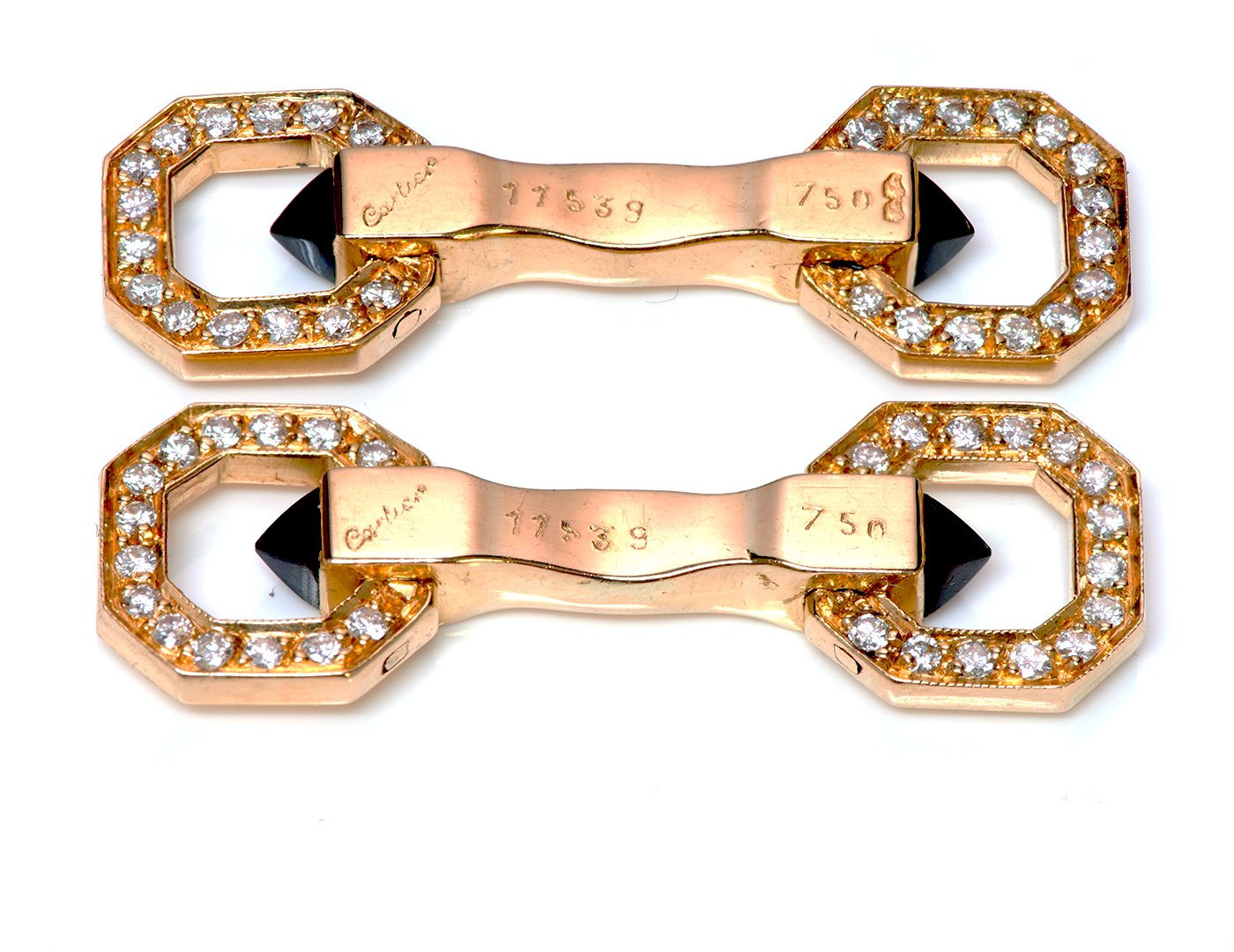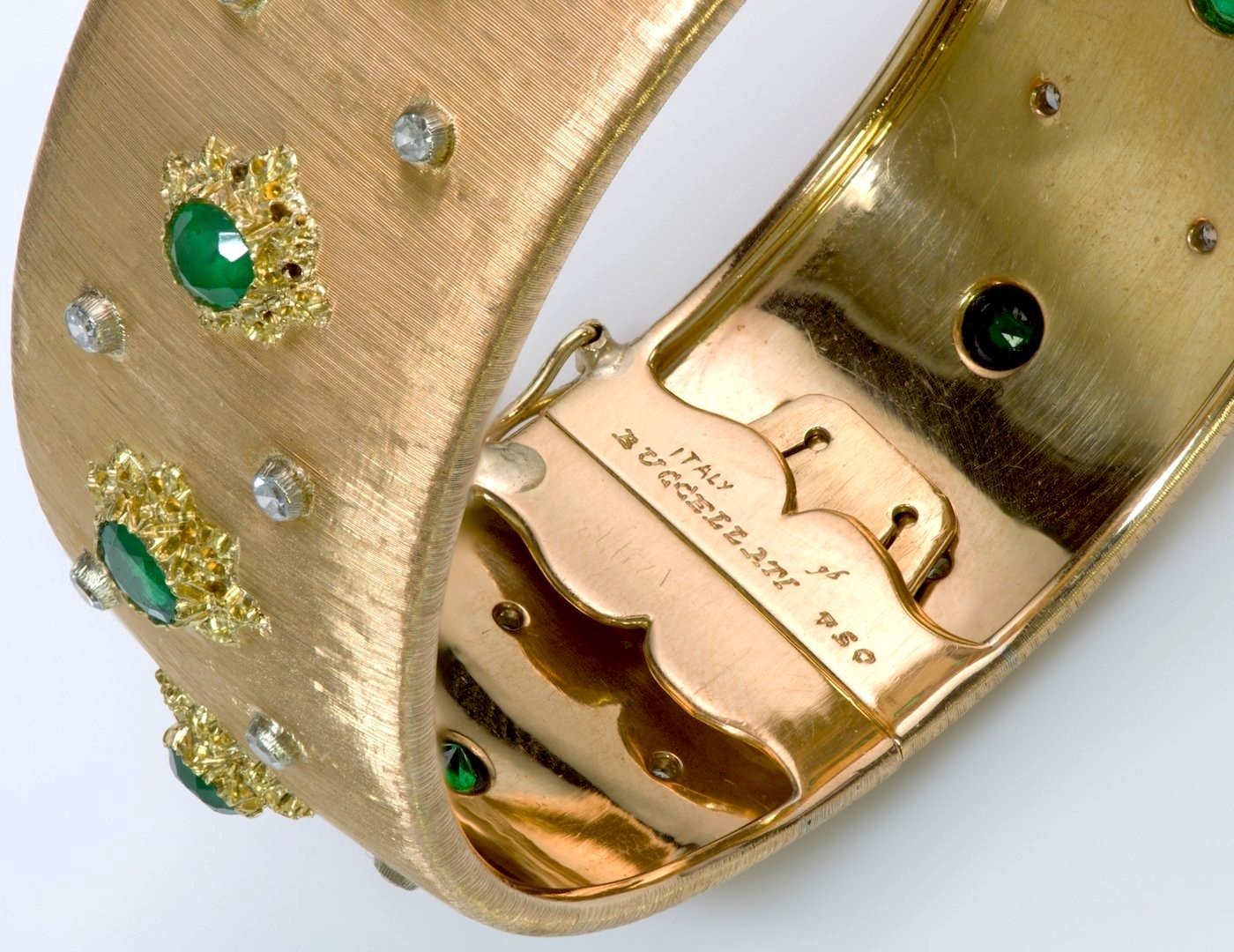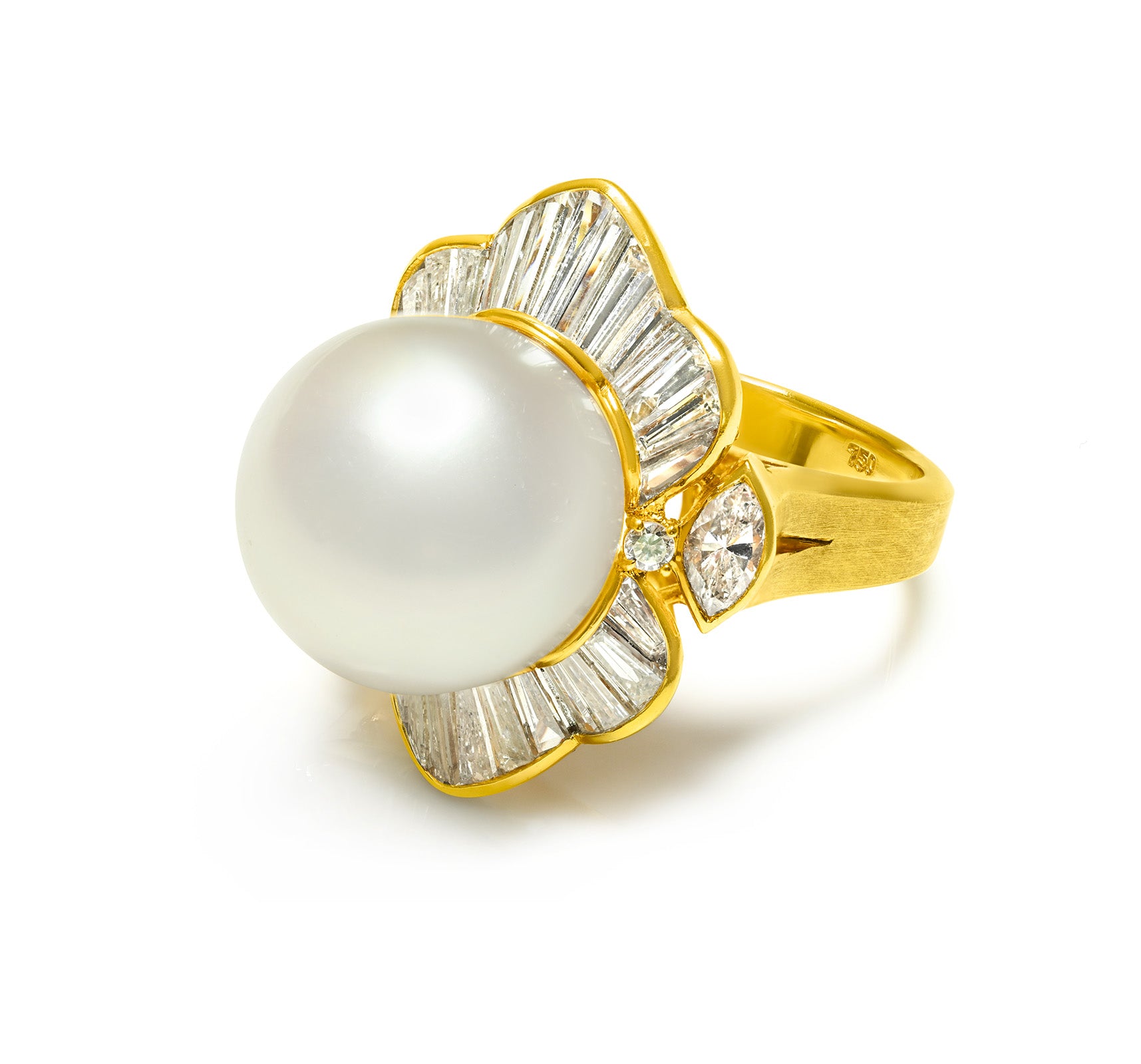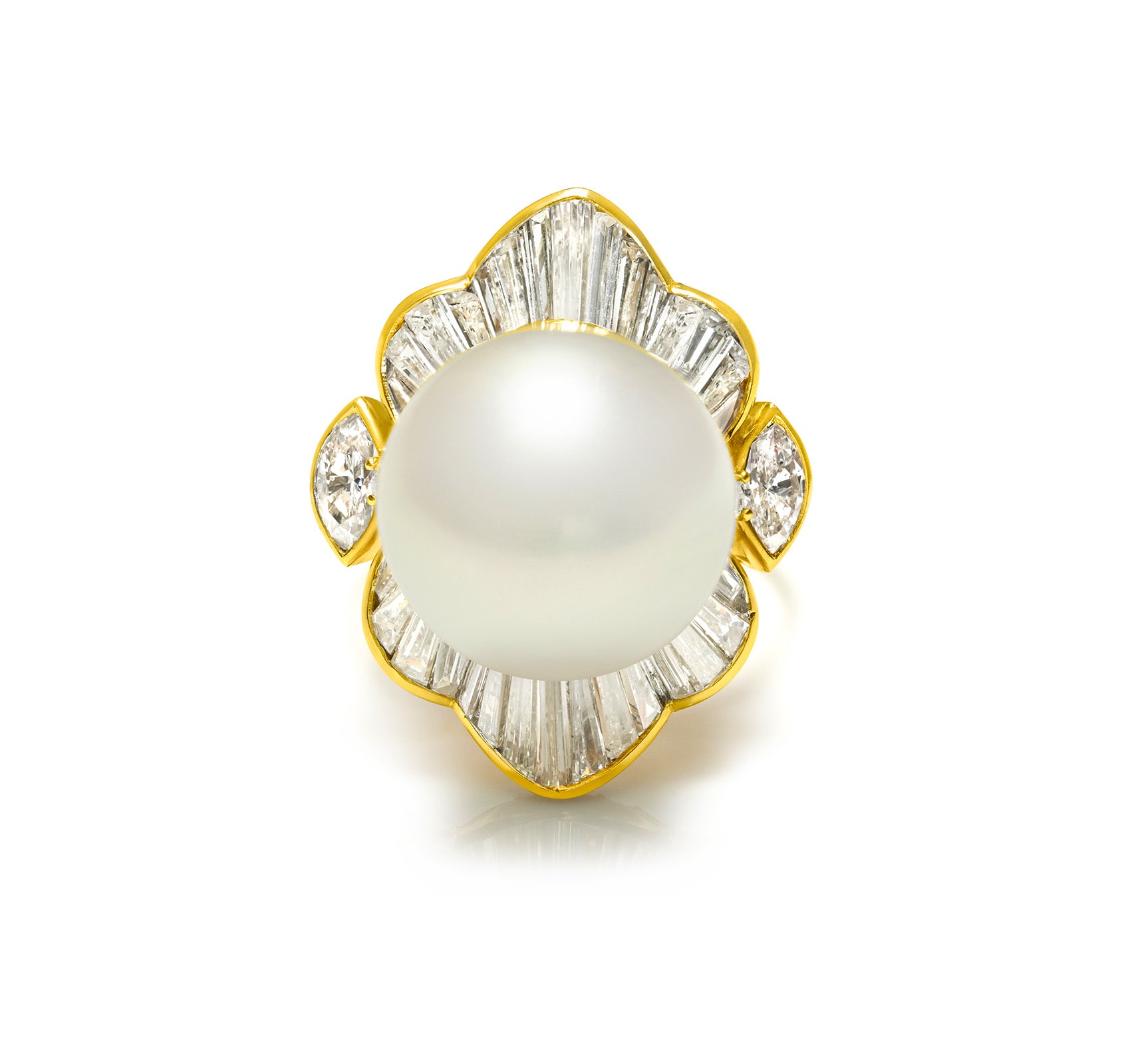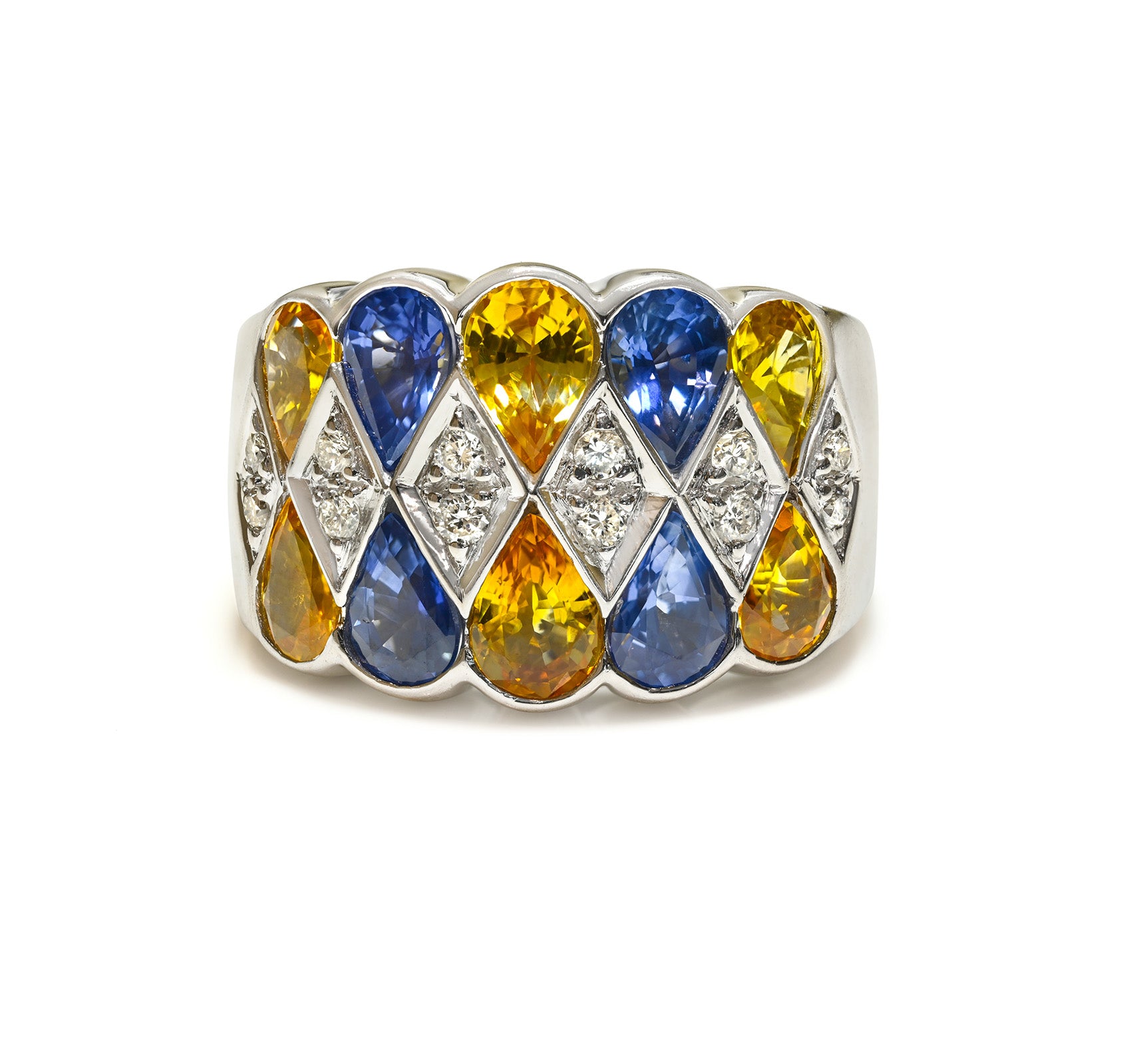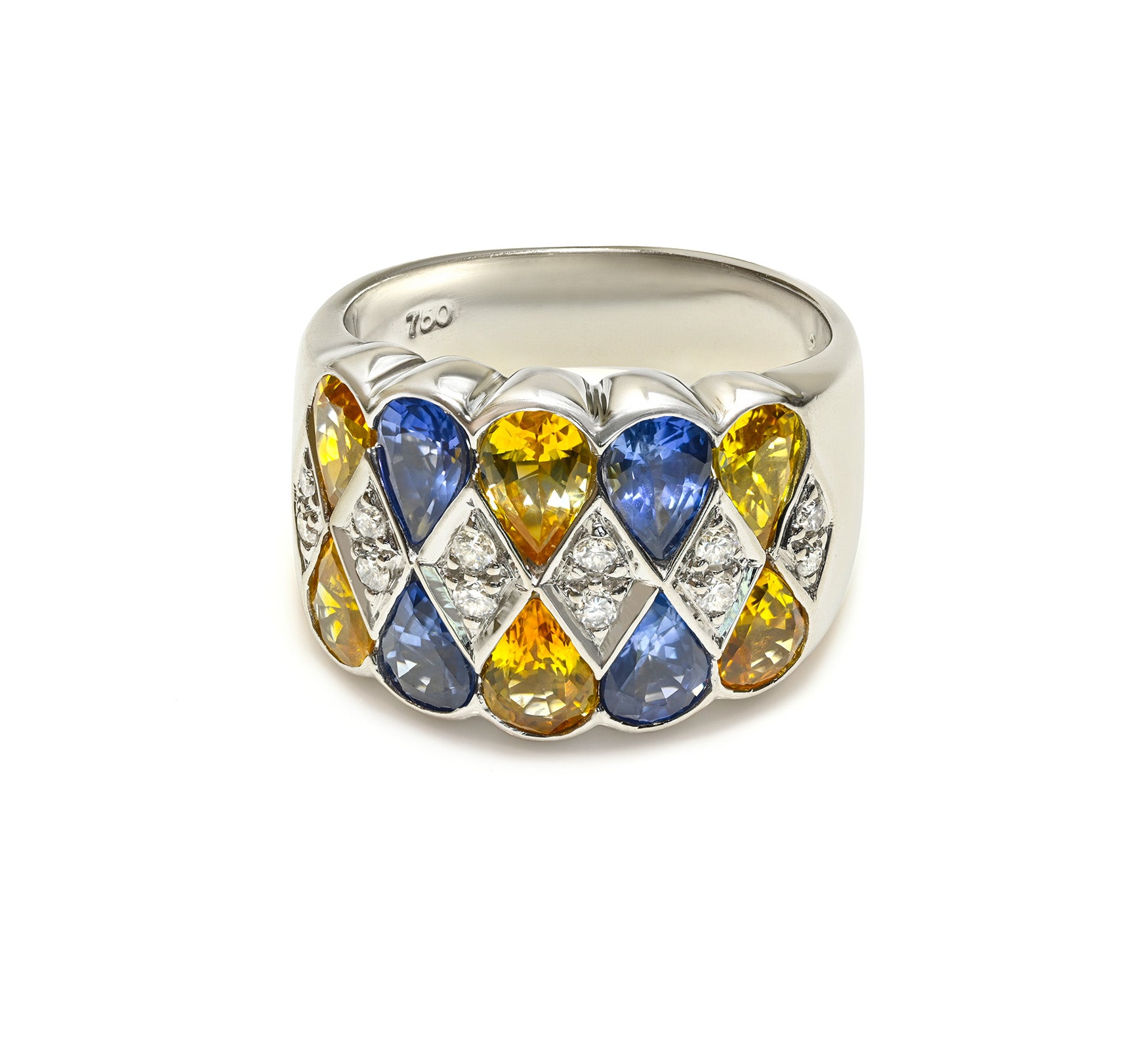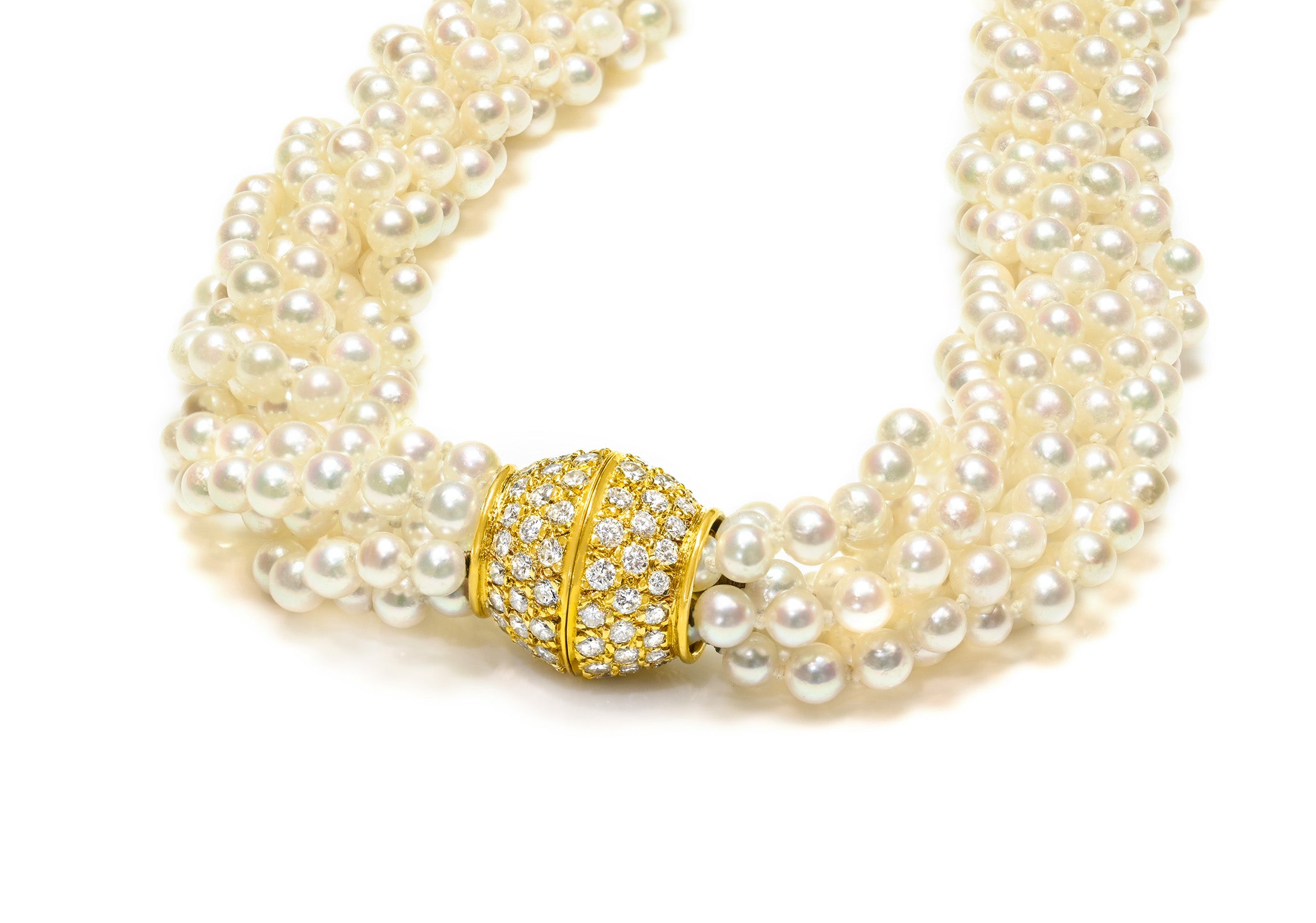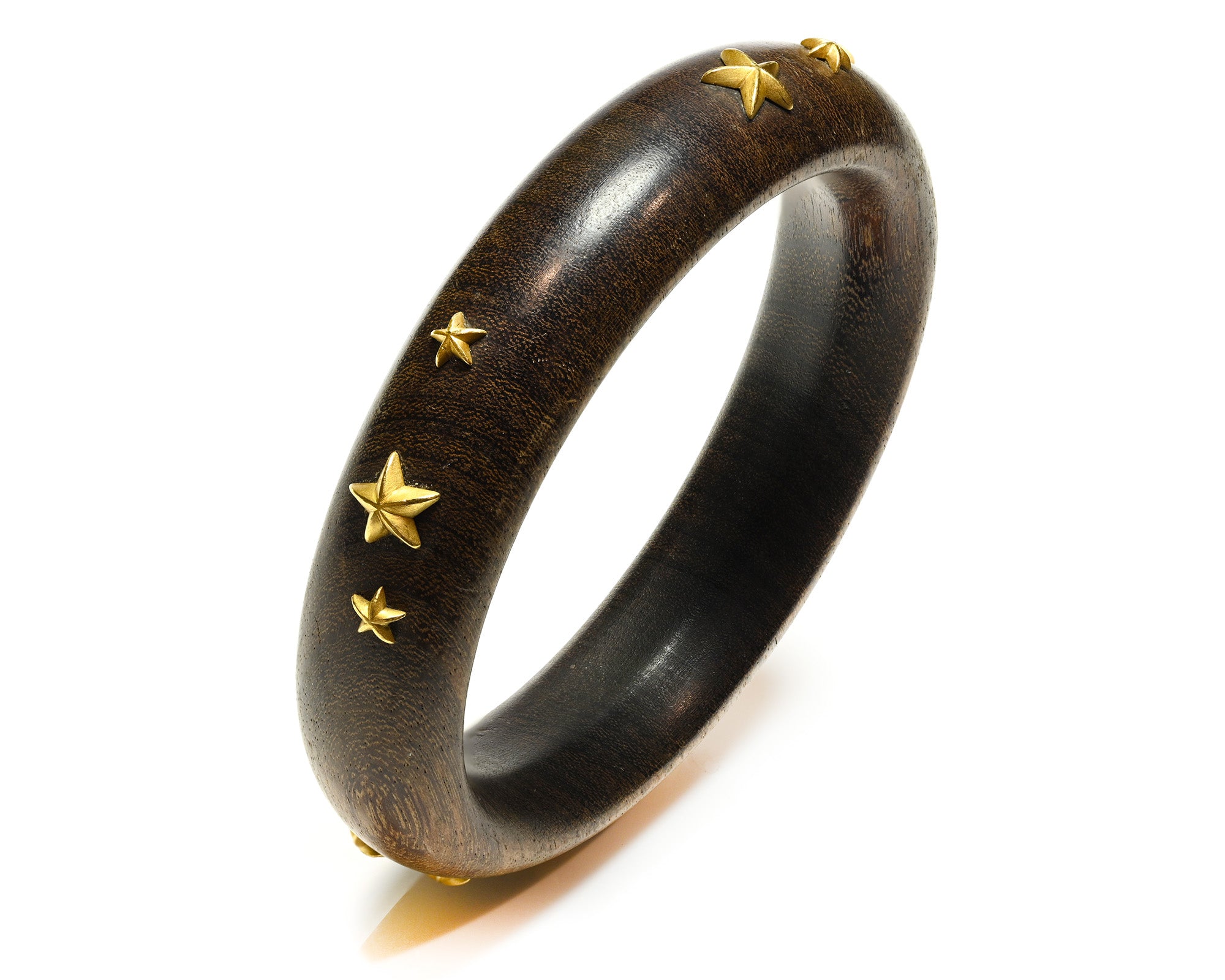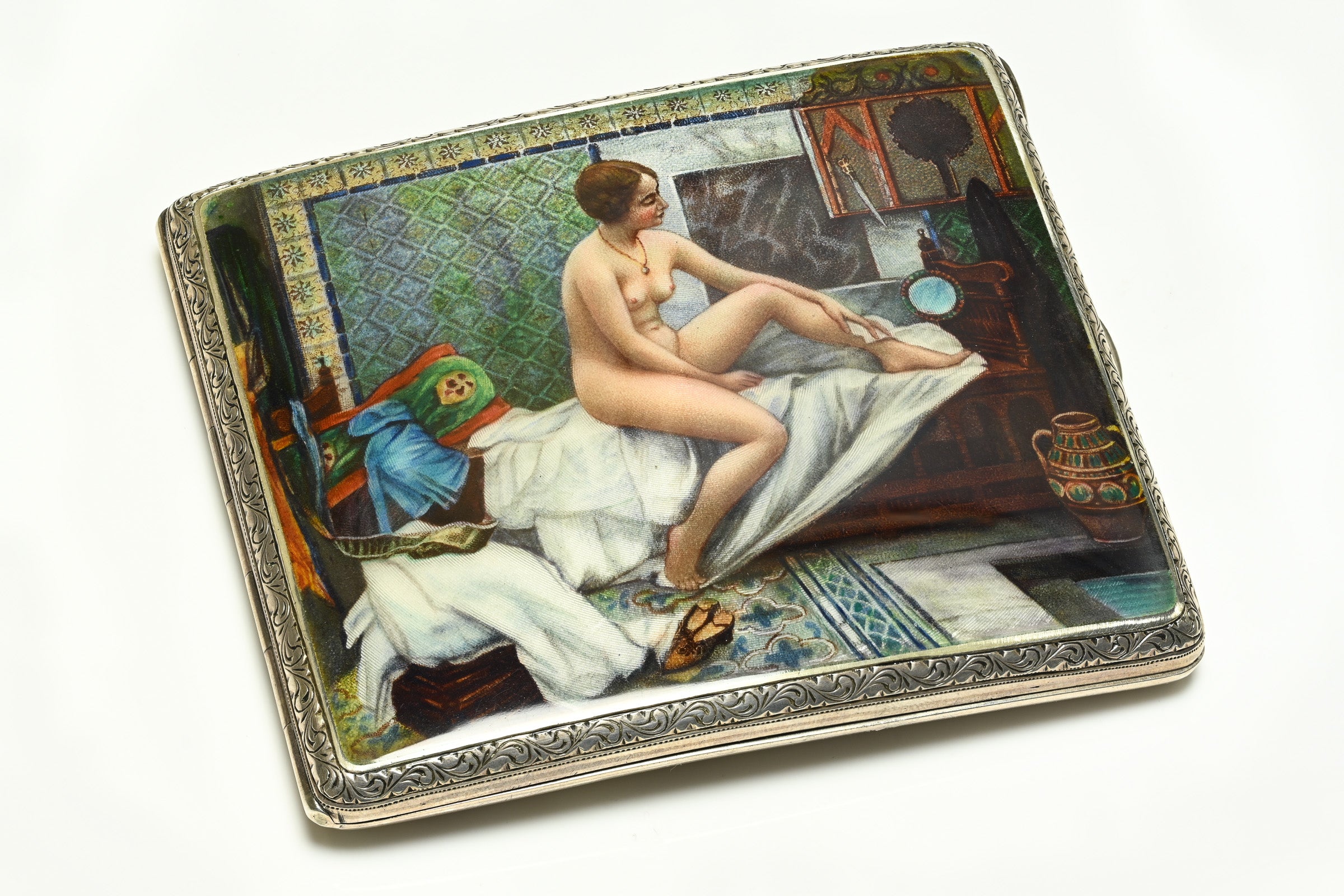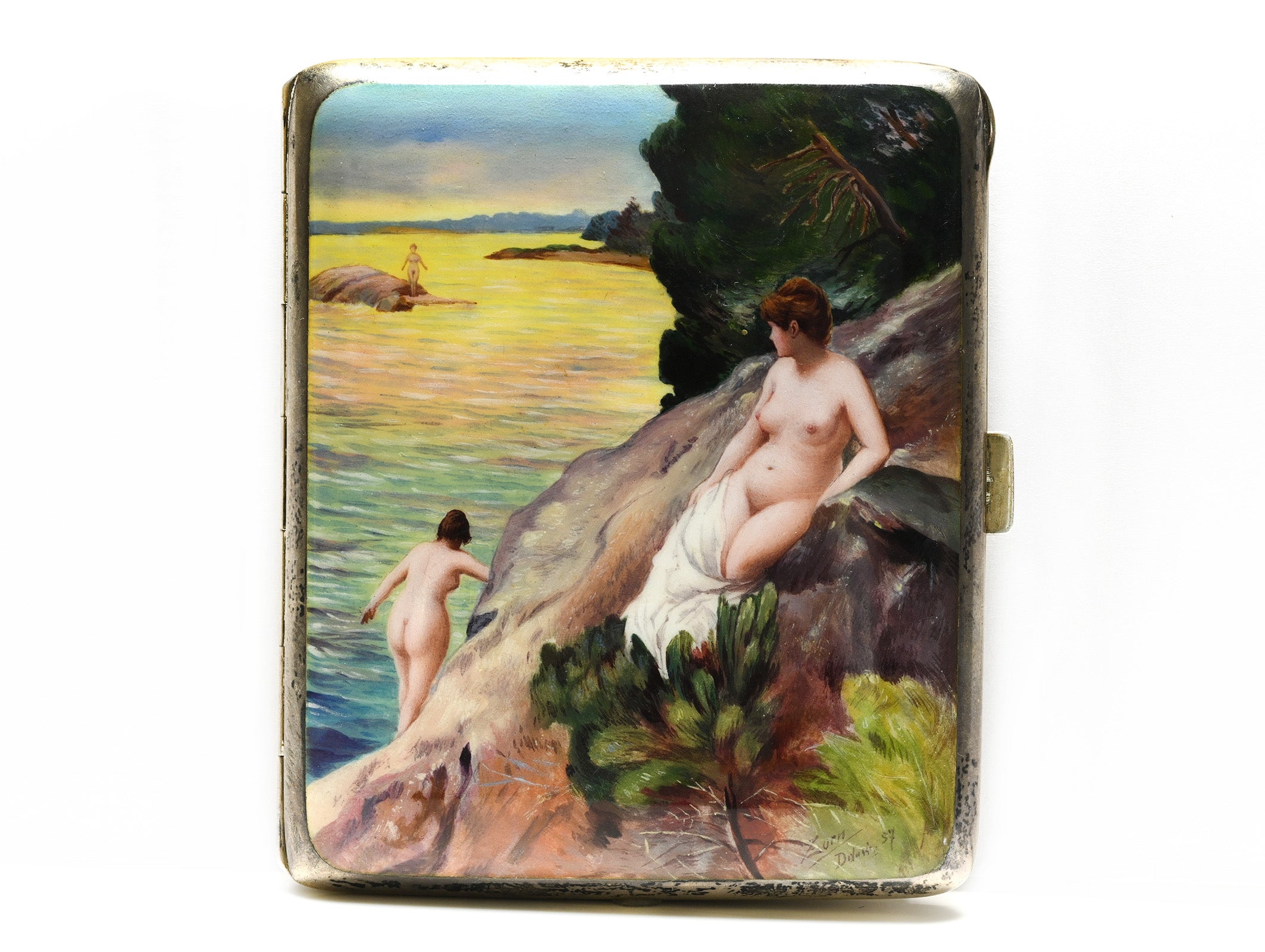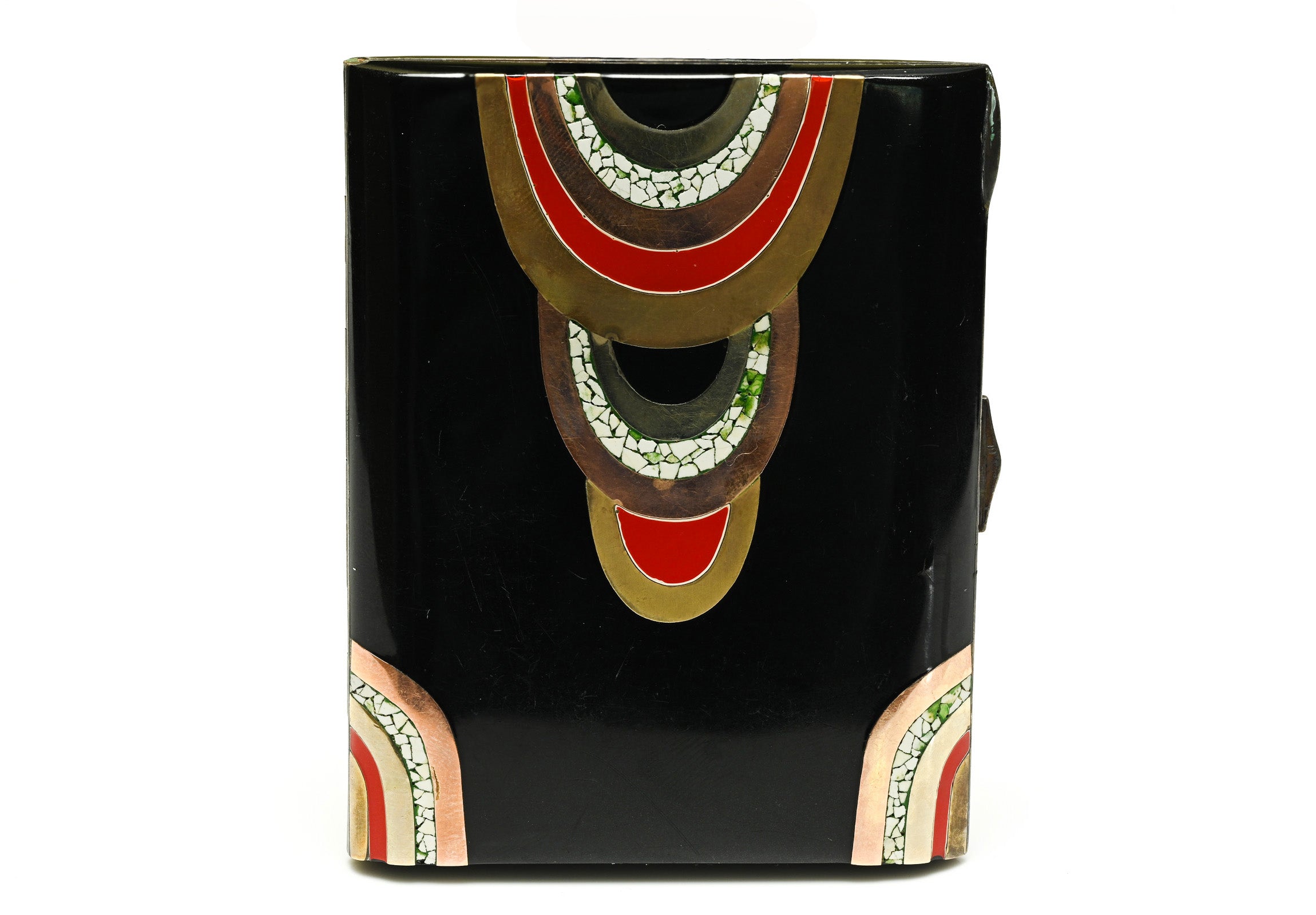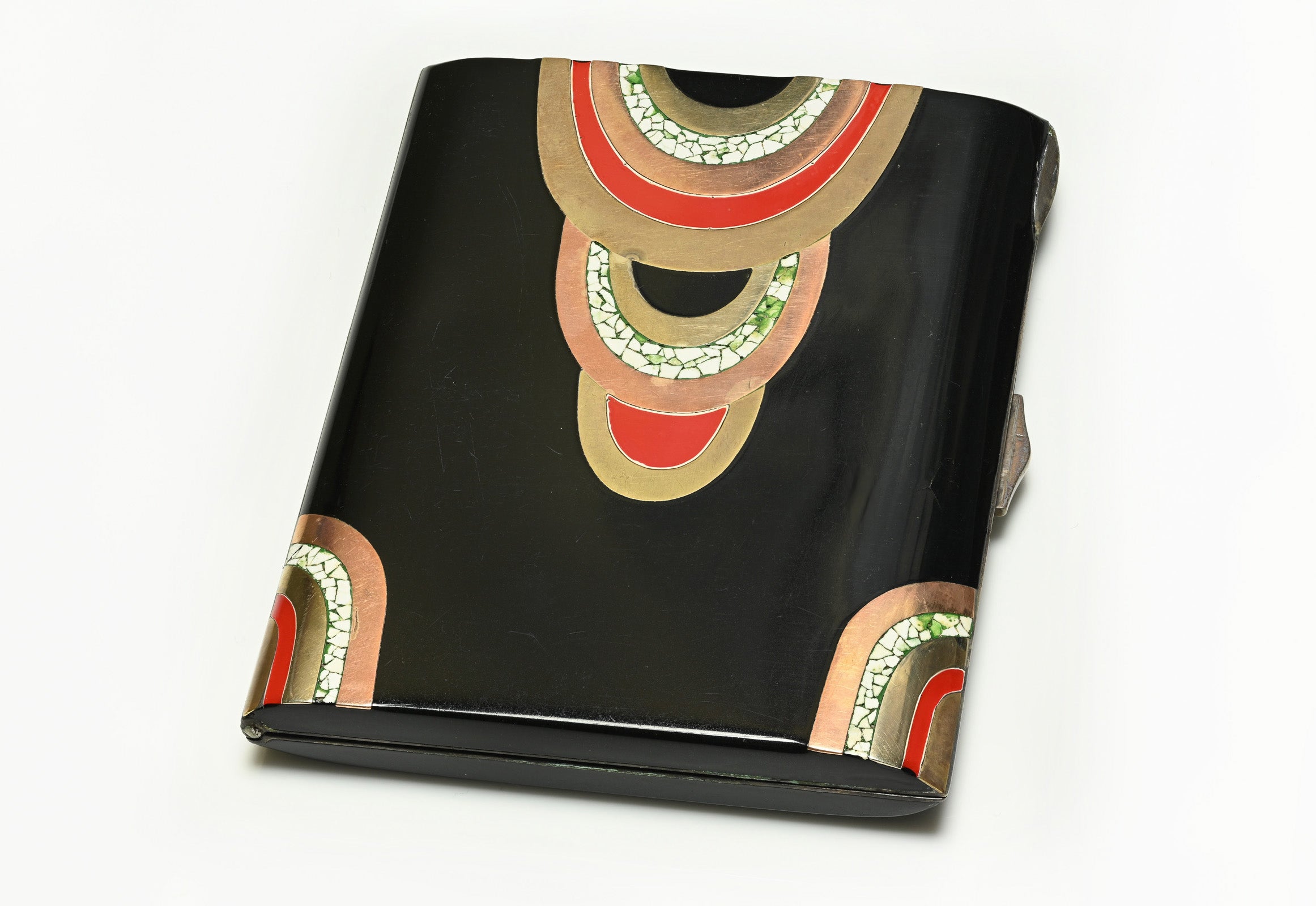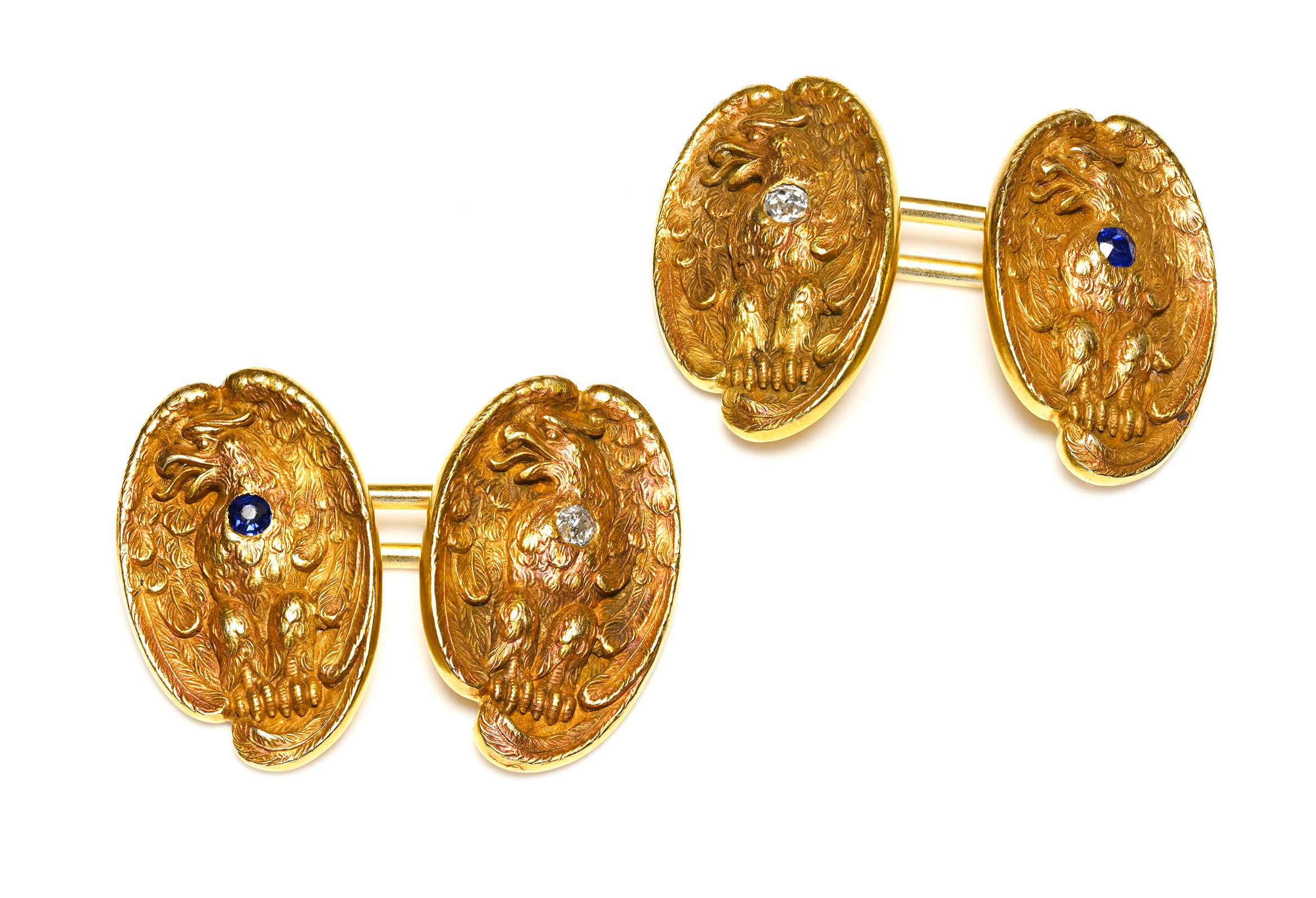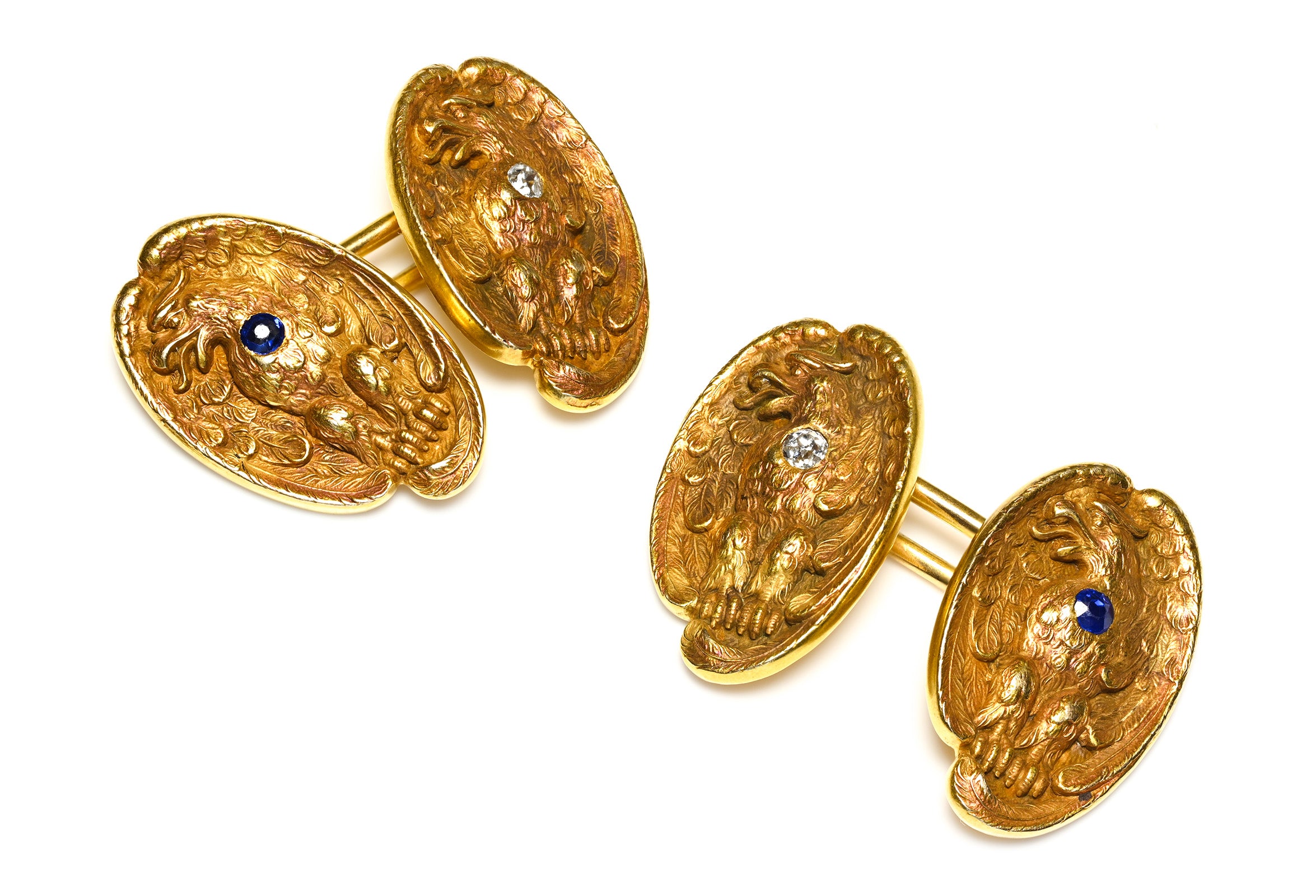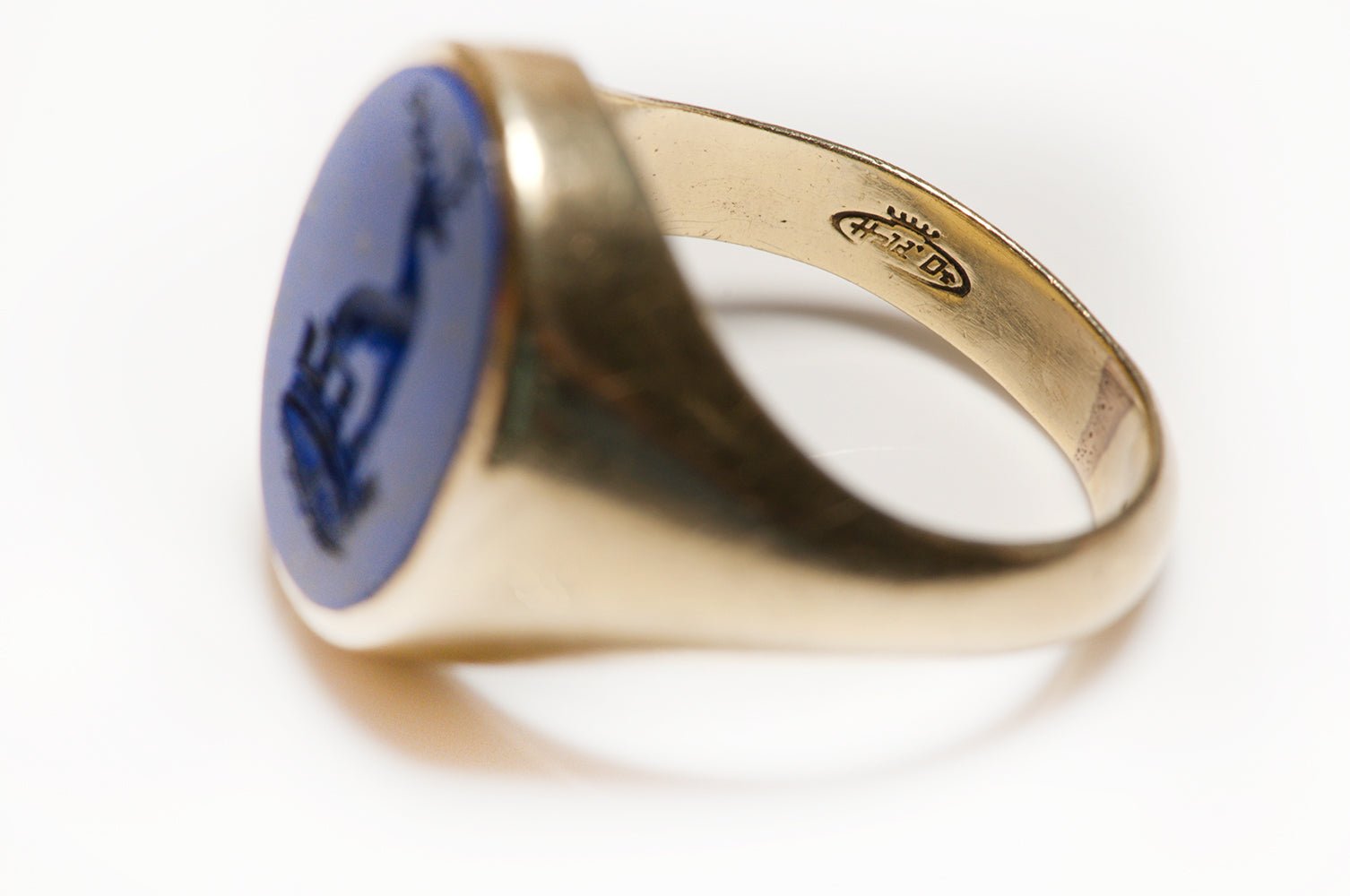
Jewelry Hallmarks - The Ultimate Guide
What Are Jewelry Hallmarks and Why They Matter
Jewelry hallmarks are the essential “signatures” stamped into gold, silver, platinum, and other precious metal pieces, revealing their metal purity, maker, origin, and age.
Far more than decorative impressions, these small symbols are a universal language of authenticity, quality, and history.
For collectors, jewelers, and investors alike, understanding jewelry hallmarks is the key to identifying genuine antique and vintage pieces, assessing value with confidence, and avoiding costly mistakes.

Importance of Understanding Hallmarks in Jewelry
- Authenticity Verification: Hallmarks help verify the authenticity of precious metal items, ensuring they are not counterfeit.
- Quality Assurance: They indicate the purity of the metal used, helping buyers assess the quality of a piece.
- Value Determination: Hallmarks provide crucial information that helps in assessing the value of jewelry pieces.
- Historical Insight: They offer insights into the origin and age of a piece, which is particularly valuable for antique collectors and historians.
What You Will Learn from This Ultimate Guide
In this guide, you will gain a comprehensive understanding of:
- The history and evolution of hallmarking practices.
- Different categories of jewelry hallmarks including metal purity marks, maker's marks, assay office marks, date letters in British jewelry, and additional marks.
- How to locate hallmarks on various types of jewelry.
- Distinguishing between antique, vintage, and modern hallmarks.
- Reading and interpreting jewelry hallmarks like a professional.
- The role of hallmarks in value assessment and authenticity verification.
A Brief History of Hallmarking
Jewelry hallmarks have a long and fascinating history that dates back centuries. The origins of jewelry hallmarks can be traced to the 4th century in Byzantium, where early forms of hallmarking were used to indicate the quality of precious metals. However, it was in medieval Europe that the practice truly began to take shape.
Origins of Jewelry Hallmarks
In 1238, King Louis IX of France established regulations for goldsmiths to mark their wares with a maker's mark. This practice was soon adopted by other European countries.
In England, King Edward I mandated the hallmarking of gold in 1300, setting the foundation for one of the most comprehensive hallmarking systems in the world.
Evolution of Hallmarking Practices Over Time
- 14th to 17th Centuries: Expansion and standardization across Europe. Different countries developed unique symbols and marks to represent their assay offices and metal purity standards.
- 19th Century: Industrial Revolution brought about a significant increase in jewelry production. Countries like Germany, Italy, and Russia established their hallmark systems.
- 20th Century: Introduction of international conventions such as the Vienna Convention on Precious Metals (1972), allowing for mutual recognition of hallmarks among member countries.
Countries with hallmark systems include:
- United Kingdom: Known for its detailed system including date letters and assay office marks.
- France: Renowned for its "poinçons" or small punch marks.
- Italy: Famed for intricate maker's marks often featuring city codes.
Hallmarking has evolved into a sophisticated method for ensuring quality and authenticity, reflecting both historical craftsmanship and modern regulatory standards.

Exploring Major Categories of Jewelry Hallmarks
Understanding the major categories of jewelry hallmarks is essential for anyone interested in authenticating, valuing, or collecting fine jewelry. Each hallmark tells a unique story about a piece—its material, origin, and journey through history. The most foundational category: metal purity marks.
1. Metal Purity Marks
Metal purity marks are at the heart of jewelry hallmarks. These markings reveal the precise composition of the precious metal used in a piece, offering crucial information for buyers, sellers, and collectors alike.
The Karat System for Gold Purity
Gold’s value and desirability hinge on its purity. The karat (abbreviated as "K") system is widely recognized:
- 24K (24 karat): Pure gold (99.9% gold content). Rarely used for jewelry due to softness.
- 18K (18 karat): 75% gold, alloyed with other metals for durability.
- 14K (14 karat): 58.3% gold. Popular in the United States for its balance of richness and resilience.
- 10K (10 karat): 41.7% gold—harder and more affordable.
- 9K (9 karat): 37.5% gold; common in UK and some European jewelry.
You might be curious why not all gold jewelry is pure 24K. Pure gold is extremely soft and impractical for daily wear, so it's often mixed with alloys like copper or silver to increase strength.
The "925" Mark & Silver Purity
Sterling silver is known worldwide for its brightness and workability, but pure silver is too soft for durable items.
- "925": Indicates that the item contains 92.5% pure silver—sterling standard.
- Other numbers like "800," "835," or "958" may appear, each reflecting parts per thousand of silver content: 800: 80% pure silver, 958: Britannia silver (95.8% pure).
Spotting a “925” mark assures you of high-quality sterling—a global standard prized by jewelers and collectors.
Millesimal Fineness Scale
While karats are used for gold, most countries now use the millesimal fineness scale to express precious metal content:
- Expressed as a three-digit number stamped onto the metal.
- Indicates parts per thousand of pure metal present.
For example:
- 750 = 75% pure gold (equivalent to 18K)
- 585 = 58.5% pure gold (equivalent to 14K)
- 916 = 91.6% pure gold (22K)
- 999 = nearly pure precious metal (gold or silver)
A millesimal stamp—such as “750” on a ring or “925” on a bracelet—is your shortcut to understanding both value and authenticity at a glance.
Metal purity marks serve as an international language in jewelry hallmarks, bridging different regions and cultures through universally recognized symbols and numbers.

2. Maker's Marks
Maker's marks are an essential part of jewelry hallmarks. They identify the manufacturer or designer of a piece. These marks are usually unique symbols, initials, or names stamped onto jewelry items, providing valuable information about their origin.
Purpose and Importance of Maker's Marks
Maker's marks serve several important purposes in the world of jewelry:
- Identifying Origin: Maker's marks help trace the origins of a jewelry piece, revealing who crafted it and often where it was made. This is particularly useful for collectors and historians seeking to understand the provenance of an item.
- Ensuring Authenticity: These marks serve as a form of authentication. Knowing the maker can verify that the piece is genuine and not a counterfeit.
- Enhancing Value: Jewelry from renowned makers often holds higher value. Recognizing a prestigious maker's mark can significantly increase an item's worth in both historical and monetary terms.
Identifying the Manufacturer or Designer from Maker's Marks
To identify the manufacturer or designer using maker's marks, you can follow these steps:
- Research Databases: There are specialized databases and reference books that catalog various maker's marks, especially those from well-known jewelers.
- Consult Experts: Jewelers, appraisers, and historians can provide insights into specific marks based on their expertise.
- Online Resources: Websites dedicated to hallmark identification often have extensive collections of maker’s marks which can be searched using keywords related to style or era.
For instance:
- A ring stamped with "Tiffany & Co." indicates it was manufactured by the luxury jeweler Tiffany & Co., renowned for its high-quality craftsmanship.
- An antique brooch bearing the initials "L.C." could be traced back to Louis Comfort Tiffany, adding significant historical value.
Understanding maker's marks adds depth to your knowledge of jewelry hallmarks, complementing other major categories such as metal purity marks and assay office marks. Recognizing these symbols enables you to appreciate the artistry behind each piece while confirming its authenticity and value.


3. Assay Office Marks
Assay office marks are essential for verifying metal purity standards. These marks are symbols stamped on jewelry and precious metals by officially recognized assay offices to certify the metal's authenticity and quality. They provide an added layer of assurance for both buyers and sellers, ensuring that the metal meets specific purity criteria.
Each assay office has its unique symbol, making it possible to identify the origin of the piece. Here are some examples of symbols used by different assay offices worldwide:
United Kingdom
- Anchor: Represents the Birmingham Assay Office.
- Leopard's head: Symbolizes the London Assay Office.
- Castle: Indicates the Edinburgh Assay Office.
- Three wheat sheaves: Signifies the Chester Assay Office (no longer operational).
France
- Eagle's head: Denotes gold items.
- Minerva's head: Used for silver items.
Italy
- The mark typically includes a star followed by a number and two-letter abbreviation indicating the province (e.g., Stella "1 TO" for Turin).
United States
- While there is no mandatory system like in Europe, some pieces may bear marks from private assay offices or manufacturers.
Understanding these symbols helps in identifying genuine pieces and avoiding counterfeits. For example, an item with a hallmark from a reputable assay office is more likely to meet high standards of metal purity. This adds significant value to the piece, both monetarily and historically.
Assay office marks are an integral part of major categories of jewelry hallmarks, complementing other hallmarks like metal purity marks and maker's marks by providing official verification from recognized institutions. This ensures that each piece not only meets aesthetic and design standards but also adheres to stringent quality controls.

4. Understanding Date Letters in British Jewelry Hallmarks
Date letters are an important part of jewelry hallmarks, especially for pieces made in Britain. While metal purity marks indicate the amount of gold or silver in a piece, date letters serve a different purpose.
They provide a specific year when a piece was officially assessed, acting as a historical marker. This information is valuable for collectors, jewelers, and anyone interested in understanding the history behind their jewelry.
How Do Date Letters Work?
- Each year, British assay offices assign a unique letter (or sometimes a symbol) to represent that specific calendar year.
- These letters are often presented in different fonts, cases (upper or lower), and shield shapes to avoid confusion across centuries.
For example:
- A lowercase “b” in a particular shield shape may represent 1917 in London.
- The same letter style could signify a different year altogether in Birmingham or Edinburgh.
Why Are Date Letters Important?
- Accurate Dating: Date letters allow for precise dating of jewelry, something that generic metal purity marks like “925” for silver purity or “18K” for gold purity cannot provide.
- Authenticity Verification: Being able to match the date letter with official tables from assay offices helps confirm whether a piece is genuinely antique or vintage.
- Historical Insight: They provide context about the era, craftsmanship trends, and even help identify periods of economic change or war-time restrictions reflected in jewelry design and materials.
You might be surprised how invaluable these small stamped letters become when tracing family heirlooms or evaluating estate finds. With the right date letter chart and a magnifying glass, every British jewelry piece becomes an open history book.
The unique system of date letters used in British hallmarking sets it apart from practices in other countries. This distinction makes it an essential part of understanding the various types of jewelry hallmarks and their significance. By delving into this level of detail, we can not only verify authenticity but also deepen our appreciation for craftsmanship across generations.

5. Additional Marks on Jewelry Pieces
Besides the primary hallmarks like metal purity marks and maker's marks, jewelry pieces often feature other types of markings that convey critical information about the item. These additional marks include:
Trademark Symbols
Trademarks are unique symbols or logos used by manufacturers to identify their products. In the context of jewelry, a trademark can signal authenticity and brand identity. For instance, the iconic "Tiffany & Co." stamp not only assures quality but also enhances the item's value due to its association with a prestigious brand.
Design Patents
Design patents protect the unique visual qualities of a jewelry piece. Patent marks typically include a patent number and date, indicating that the design is legally protected against replication. This kind of mark adds an extra layer of prestige and exclusivity to the item, often increasing its desirability among collectors.
Copyright Marks
Copyright marks indicate that specific artistic elements of a jewelry piece are protected under copyright law. These marks are essential for preserving the intellectual property rights of designers and manufacturers. A common format might be a "©" symbol followed by the year of creation and the owner's name or company.
Recognizing these additional marks can significantly enhance one's ability to appreciate and assess a piece of jewelry accurately. Each mark tells part of the story—whether it's about origin, authenticity, or legal protection—helping you fully understand what you're looking at when examining fine jewelry items.
Understanding these various categories of jewelry hallmarks and their significance ensures that you are well-informed when evaluating or purchasing fine jewelry pieces.

Finding Hallmarks: Where to Look on Your Jewelry Pieces
Identifying the location of hallmarks on jewelry pieces is essential for verifying authenticity and understanding the metal content. Here are some common areas where you can find these marks:
1. Rings
Hallmarks are typically located inside the band. Inspect the inner circle closely, as this is a prime spot for purity marks, maker's marks, and other identifiers.

2. Chains and Necklaces
Often found near the clasp or on a small tag attached to the chain. These locations are convenient for hallmarking since they don't distract from the design while remaining accessible for verification.
3. Bracelets
Similar to chains, hallmarks on bracelets are usually located near the clasp or on an attached tag. For solid bangles, check the inner surface or edges.
4. Earrings
Posts and backs of earrings are common places for hallmarks. For hoop earrings, examine the inner side of the hoops or any flat areas where stamps can be applied without damaging the piece.
Understanding these typical hallmark locations helps in quickly and effectively assessing your jewelry pieces. By knowing where to look, you can verify important details about your jewelry's origin, authenticity, and metal content.
Antique vs. Vintage vs. Modern: Understanding Different Types Of Jewelry Hallmarks
Recognizing the era of a jewelry hallmark unlocks clues about a piece’s history and craftsmanship. Antique jewelry hallmarks, vintage jewelry hallmarks, and modern marks each reflect unique standards and styles from their respective periods.
Antique Jewelry Hallmarks (typically pre-1920s)
Antique Jewelry Hallmarks have distinct characteristics that set them apart:
- Hand-stamped Impressions: Antique hallmarks are often hand-stamped, resulting in deeper, sometimes irregular impressions.
- Artistic Symbols: Complex symbols or ornate crests are common, reflecting the artistry of earlier assay offices.
- Full Hallmarking Sets: British antique pieces frequently feature full hallmarking sets, including the purity mark, maker’s mark, assay office symbol, and date letter.
- Older Country Marks: You might spot older country marks or now-defunct assay offices, such as the leopard’s head crowned (London) pre-1822.
Vintage Jewelry Hallmarks (approximately 1920s–1980s)
Vintage Jewelry Hallmarks exhibit certain traits influenced by technological advancements:
- Uniform Stamps: Stamps become more uniform thanks to mechanized production.
- Stylized Fonts and Shapes: Art Deco and Retro eras introduce stylized fonts and geometric shapes in hallmarks.
- Initials or Trademarks: Maker’s marks often feature initials or registered trademarks rather than elaborate symbols.
Modern Jewelry Hallmarks (1980s–present)
Modern Jewelry Hallmarks showcase precision and international standards:
- Laser Engraving: Precision laser engraving creates crisp, consistent marks—often smaller but easier to read under magnification.
- Universal Purity Marks: International standards such as "925" for sterling silver or "750" for 18K gold are nearly universal.
- Streamlined Hallmark Sets: Hallmark sets may be streamlined, sometimes omitting the date letter except on British pieces.
Identifying these differences in Jewelry Hallmarks helps you determine not just age but also authenticity and collecting value. Whether you’re examining a Victorian brooch or a contemporary designer ring, understanding hallmark evolution sharpens your eye for detail and history.

Reading and Interpreting Jewelry Hallmarks Like A Pro
Decoding the information stamped on your jewelry isn’t just for industry experts—you can master the art of reading jewelry hallmarks with the right approach. Every hallmark tells a story, and learning to interpret these marks opens up a world of knowledge about your collection.
Step-by-Step Guide to Reading Jewelry Hallmarks
1. Identify All Marks
Look closely with a magnifying glass or jeweler’s loupe. You’ll often find several marks grouped together on less visible parts, such as inside ring bands or near clasps.
2. Understand Main Symbol Types
Metal Purity Marks: Numbers like 750 (18K gold) or 925 (sterling silver) indicate the metal’s fineness.
Maker’s Mark: Usually initials or a unique symbol representing the manufacturer or designer.
Assay Office Mark: Specific pictorial symbols signifying where the piece was tested for purity.
Date Letter: Found especially on British pieces, these small letters help pinpoint the year of assay.
3. Analyze Additional Symbols
Watch for extra markings: GP (gold plated), GF (gold filled), trademarks, or patent numbers that reveal more about treatment and design rights.
4. Research Reference Charts
Compare your findings to hallmark reference guides online or in print. Governments and industry groups often provide free resources and databases to identify obscure marks.
A simple sterling silver ring stamped “925 AB Anchor K” means:
“925”: Sterling silver
“AB”: Maker’s mark
Anchor: Birmingham Assay Office
“K”: Date letter for a specific year
You might be surprised at how much history and value you can uncover by simply reading jewelry hallmarks carefully—each symbol is a clue waiting to be unraveled.
The Importance of Jewelry Hallmarks in Determining Value and Authenticity
Jewelry hallmarks are a reliable way to assess value and confirm authenticity. When you see a hallmark, it means that the metal's purity has been tested and verified by an official assay office. This gives buyers and sellers confidence that a gold ring marked "18K" or a necklace labeled "925" sterling silver meets specific quality standards.

Why Hallmarks Matter for Value
- Metal Purity: Hallmarks indicate the exact metal content, distinguishing between solid gold, gold-filled, or gold-plated items. A 14K mark, for example, signals higher intrinsic value than a 9K piece.
- Maker’s Mark: Authentic pieces from renowned makers or designers can command significant premiums. Recognizing these marks helps identify origin and craftsmanship.
- Assay Office Symbols & Date Letters: These marks not only verify purity but can also add historical value—especially if the piece comes from a prestigious assay office or was made in a notable era.
Counterfeit jewelry often lacks legitimate hallmarks or uses incorrect symbols. By understanding and verifying these marks, collectors and professionals can confidently distinguish genuine precious metal jewelry from imitations, ensuring both value and authenticity are protected.

FAQs (Frequently Asked Questions)
What are jewelry hallmarks and why are they important?
Jewelry hallmarks are official marks stamped on precious metal items to indicate their metal purity, origin, and authenticity. Understanding hallmarks is crucial as they provide valuable information about the quality, maker, and age of jewelry pieces, helping buyers and collectors make informed decisions.
How did the practice of hallmarking originate and evolve over time?
Hallmarking originated centuries ago as a system to certify the purity of precious metals and protect consumers from fraud. Over time, hallmarking practices have evolved globally with various countries establishing their own hallmark systems to verify metal quality and craftsmanship standards.
What do metal purity marks like '925' or karat numbers signify on jewelry?
'925' is a silver purity mark indicating 92.5% pure silver, known as sterling silver. Gold purity marks use the karat system (e.g., 14K, 18K) to denote the proportion of gold content. The millesimal fineness scale also quantifies metal quality by parts per thousand, providing precise purity information.
How can I identify the maker or origin of a jewelry piece using hallmarks?
Maker's marks are unique symbols or initials stamped on jewelry that identify the manufacturer or designer. By researching these marks in hallmark databases or guides, you can trace the origin and craftsmanship details of your jewelry item.
Where can I typically find hallmarks on different types of jewelry?
Hallmarks are commonly located in discreet areas such as the inside band of rings, clasps of chains and bracelets, or backs of earrings. Knowing these typical locations helps in locating and verifying hallmarks for authenticity checks.
How do hallmarks assist in assessing the value and authenticity of jewelry?
Hallmarks provide verified information about metal purity, maker identity, assay office verification, and date letters which collectively help determine a piece's quality, provenance, and age. This information is essential for accurate value assessment and distinguishing genuine items from counterfeits.


